This article was produced for ProPublica’s Local Reporting Network in partnership with the Idaho Statesman. Sign up for Dispatches to get stories like this one as soon as they are published.
Do you have experience with Idaho’s public schools? Please get in touch.
Jan Bayer sank into the couch in the family room of her Bonners Ferry, Idaho, home and stared at her phone, nervously awaiting a call. Her twin teenage daughters were nearby, equally anxious.
It was election night in March 2022, and Bayer, the superintendent of the Boundary County School District in a remote part of Idaho on the Canadian border, had spent months educating voters about a bond that would raise property taxes to replace one of her district’s oldest and most dangerous buildings: Valley View Elementary School. Built just after World War II, the school was falling apart.
The walls were cracked. The pipes were disintegrating. The ceilings were water-stained. The electrical system was maxed out and the insulation was nearly nonexistent. Classrooms froze in the winter and baked in the summer. The roof, part of which had already collapsed once, was nearing the end of its lifespan. Outside, potholes pocked the parking lot and deep splits formed in warped sidewalks. The kindergarten playground, weathered from decades of brutal winters, had turned hazardous; at times, sharp screws protruded from some of the equipment, and kids routinely got splinters from the wooden crossbeams.
Most worrisome to Bayer and her staff: Kindergarten students had to cross a street multiple times a day just to navigate the sprawling six-building campus, a piecemeal attempt to add much-needed classroom space.
The bond promised to fix all that — if voters approved it.
“You’re just honestly praying for a miracle,” Bayer said. “I said a lot of prayers all day long, saying, ‘OK, we can do this. We can do this.’”
At about 8:30 p.m., a call came in from the county clerk. More than 2,000 people voted, and about 54% of them supported the bond, the clerk said. Bayer’s heart sank and she broke into tears. In Idaho, a majority wasn’t enough. The state is one of just two in the nation that require support from two-thirds of voters to pass a bond.
Bayer shared the results with the school board, school staff and the facilities committee. Over the next several hours, she received calls and messages from community members. They told her to keep fighting. So she did. The district put another bond on the ballot in August, and students rallied to support it. On Election Day, the high school football team even stood on the bridge over the Kootenai River and held yellow signs that read “Vote Yes for Kids,” hoping to persuade voters as they drove to the Boundary County Fairgrounds to cast their votes. But the second bond fared worse. Just over 40% of voters backed the new measure, which hit the ballot as residents received a notice that their property assessments were going to rise and voters were worried about tax increases. “It went down in a ball of flames,” Bayer wrote to the school board.
No other state spends less on education per student than Idaho, according to a recent report from the U.S. Census Bureau, which surveys and ranks school finance systems. It also ranks last in the nation in terms of school infrastructure spending per pupil, a state report shows. So over the past several decades, rural districts across the state have faced the same challenge as Bayer: To improve or replace aging — and sometimes dangerous — facilities, they must appeal to local taxpayers and clear some of the nation’s most restrictive thresholds for school funding. Despite urgent needs, most of these efforts fail, an investigation by the Idaho Statesman and ProPublica has found. As a result, students across the state must learn amid dire conditions.
In one Idaho school, the foundation is crumbling. In another, so few bathrooms serve hundreds of kids that students have soiled themselves, according to school officials and local media. And in yet another, a portion of a roof recently failed during off-hours, sending water flooding into a classroom and bathrooms, destroying books and temporarily limiting learning space.
Since 2006, districts have mounted 217 bond attempts to remedy these types of problems and accommodate growing student populations. Had Idaho required only a majority of voters to support the measures — the threshold in most states — 83% of them would have passed. Instead, just 44% were approved, according to an analysis of bond measures and election data by the news organizations.
Like Boundary County, more than two dozen districts have tried to pass bonds and failed at least twice since 2006. Nine of those districts never succeeded during that time.
All of this matters not only for the safety and comfort of students but for their academic success. Research has shown that young people who learn in deteriorating or substandard facilities have worse educational outcomes than peers who learn in newer and functional buildings.
Superintendents say they have little choice but to patch up the issues they can see and hope it’s enough for now. But others fear that by trying to maintain buildings that need to be replaced, at best they’re wasting taxpayer dollars and at worst they’re risking an accident. “Do we keep putting a Band-Aid on something that’s broken?” said Troy Easterday, superintendent of the Salmon School District, which has tried and failed to pass a bond nearly a dozen times since 2005 in an effort to secure funding to build a new school. The district’s elementary school building, which is plagued by aging plumbing, uneven floors and a cracked foundation, is around 70 years old.
Education advocates and some lawmakers argue that the bond threshold should be lower.
By requiring support from two-thirds of voters, “you essentially allow the government to be operated through the tyranny of the minority,” said Mat Erpelding, a Democrat and former House minority leader who unsuccessfully tried to pass legislation in 2017 to start the process of lowering the threshold for passing bonds to 60%. Under that metric, about 62% of all bonds placed on the ballot since 2006 would have passed, compared to the actual passage rate of 44%, according to the Statesman-ProPublica analysis.
Some current legislative leaders, however, disagree with Erpelding’s assessment. “I think it needs to remain in place,” said state House Speaker Mike Moyle, a Republican who pointed out that the provision has been in the state’s constitution since its earliest days. “I think it’s a protection for the taxpayer.” And practically speaking, lowering the threshold would be difficult, requiring a constitutional amendment that would have to be approved by two-thirds of legislators and a majority of voters.
Gov. Brad Little has said he wants to invest more in education, and last year he signed a bill to allot $330 million to public education across Idaho. But much of that money will go toward increasing teacher pay and benefits as opposed to upgrading and replacing school facilities.
As a result, under the current system, rural districts like Boundary County continue to face a heavy fundraising burden; their communities are often poorer, smaller and less able to support tax increases than urban centers. At Valley View Elementary, for example, most students are from low-income families and about 10% are homeless, according to the State Department of Education. About three-quarters of the state’s districts are rural.
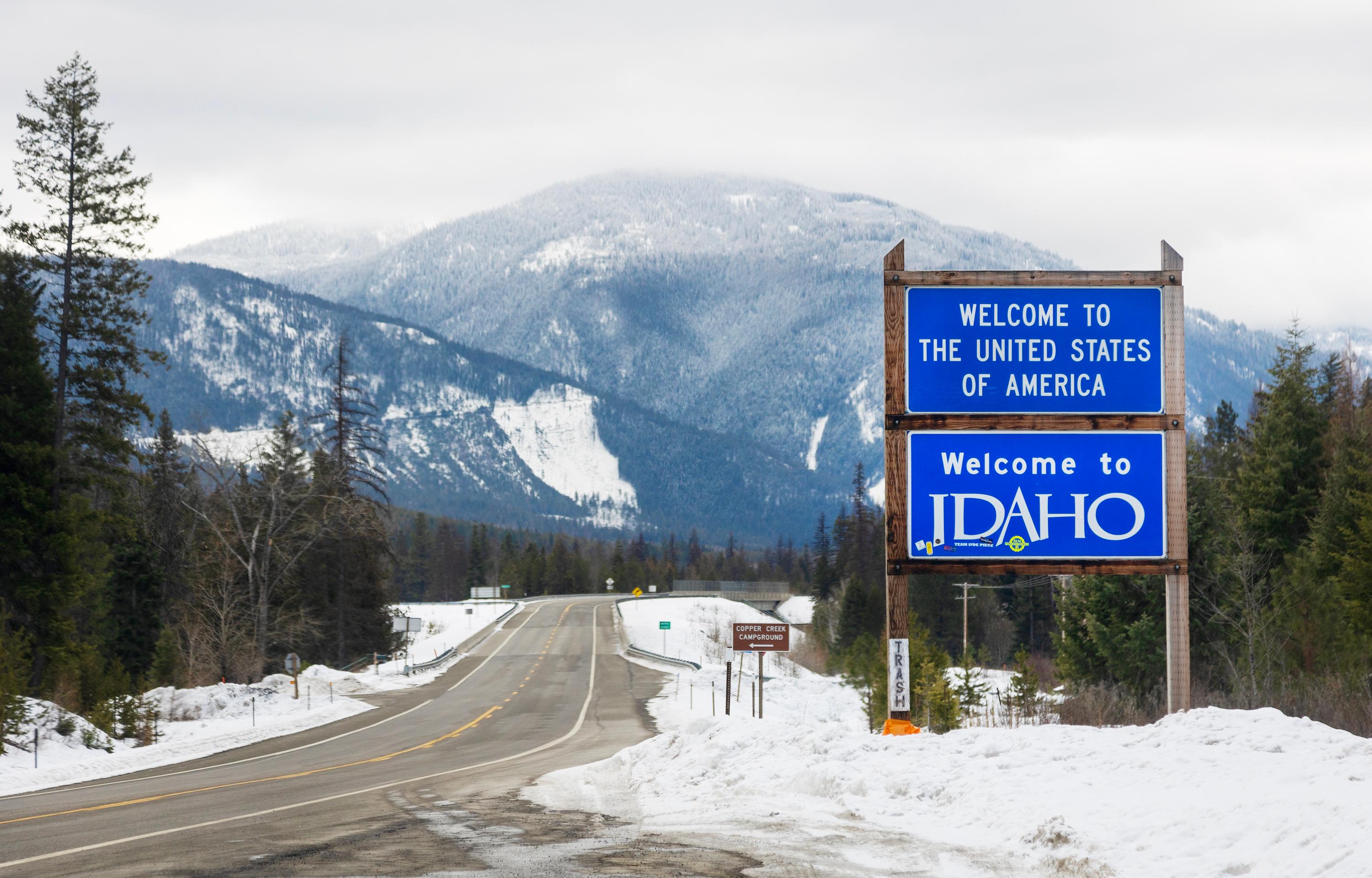
“If local taxpayers can’t afford to pay for those facilities, then those students have to do without and that does not meet the obligations put forward in the Idaho Constitution,” said Mike Journee, spokesperson for the state teachers union.
Connie Perez, who has taught at Valley View for more than three decades, said she does her best to adjust to the circumstances. But on some days, her mind drifts to the crack in the wall outside her fourth grade classroom. “That’s what scares me,” she said, “the big things that are going to happen.”
Decades of Legislative Neglect
As far back as 30 years ago, Idaho legislators were confronted with the state’s deteriorating schools. A statewide assessment funded by the Legislature found that districts needed nearly $700 million in repairs, expansions and upgrades. Seventy-one buildings were either deemed dangerous or had serious problems that needed immediate attention. In 1993, a member of the state facilities committee presented the findings to lawmakers. The Legislature, however, did little to address the issues.

Valley View Elementary in Boundary County was one of those schools that were labeled as needing immediate attention. And without an influx of funds, things got worse.
Three years after the state assessment, the school’s gym roof collapsed during winter break, when students were home. The region had gotten slammed with a major snowstorm, and the building couldn’t handle the additional weight. No one was injured, but the staff was shaken. “It’s something you don’t want to ever see again, especially when you have kids,” said Bob Overman, the former maintenance director for the district, who had just walked out of the gym when the roof caved in. “It used to worry me all the time.”
Meanwhile, elsewhere in Boundary County, administrators struggled with overcrowded schools. Voters had previously rejected three bond measures for new facilities, so students temporarily had to go to school in shifts: high school in the mornings and middle school in the afternoons and evenings. It was a strain on parents, especially those who had kids in different grade levels.
In 1999, six years after the statewide facilities assessment, then-Gov. Dirk Kempthorne took another look at the schools. Of the 71 buildings in the worst shape, 18 had been shuttered and 53 remained in service. At the facilities still in use, the “average building condition score” had declined, meaning they still had problems that needed immediate attention, according to an update to the facilities report. Even some buildings that underwent renovations, like Valley View, which had to replace the portion of the building that collapsed, did not see changes in their overall scores.
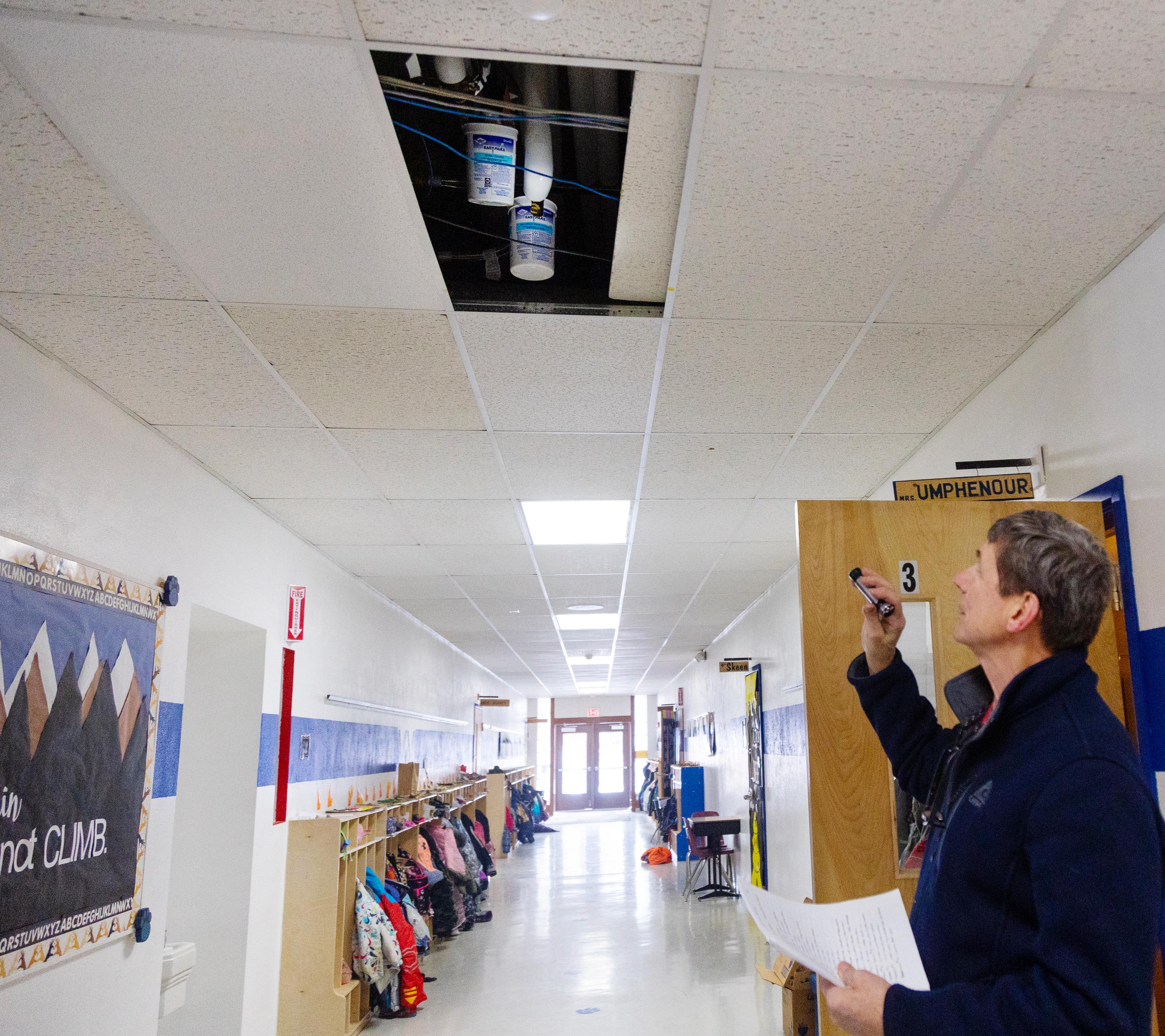
Although the Legislature made some funding changes in the 1990s, in 2001 a judge presiding over a school funding case took issue with the state’s reliance on bonds, finding that a “system based upon loans alone is not adequate to meet the constitutional mandate to establish and maintain a general, uniform, and thorough system of public, free common schools.” Citing prior rulings, the court said that mandate includes providing a “safe environment conducive to learning.”
The following year, Kempthorne advocated improving school building safety and lowering the threshold for passing bonds, according to Idaho Statesman reporting. “It’s time to solve this problem,” he said.
In 2005, the state Supreme Court weighed in, agreeing with the lower court’s finding that the state’s funding system for school facilities was unconstitutional. It noted the struggles of several districts that had failed to clear the two-thirds bar to pass a bond, despite making multiple attempts.
While the court did not prescribe specific remedies, it told the Legislature that it was lawmakers’ responsibility to ensure that school facilities are properly funded.
Over the next two decades, the cycle would repeat itself: State leaders would recommend major changes to address school facilities — including lowering the bond threshold to 60% — and the Legislature would push back, offering instead modest investments. At least two bills to make it easier for districts to pass bonds went nowhere.
As recently as last year, a state report estimated that school facilities’ needs now stand at more than $800 million, a figure that researchers acknowledged was likely on the low end of the actual need.
“The Legislature never did fulfill its responsibility,” said Jim Jones, a former state Supreme Court justice who concurred, in part, on its 2005 decision. “They nipped around the edges here and there. But they never set up a system whereby the state took responsibility, or the primary responsibility, for funding, construction and maintenance. And that’s where we are now.”
Republican state Rep. Jason Monks disagreed, saying the Legislature had fulfilled its constitutional obligation but was still working to improve public education. “Are we doing the minimum? Yes,” said Monks, the former assistant House majority leader. “Can we do better? Yes. And should we do better? Yes. But I think we are providing at least a minimum that we’re required to.”
This year, in a nod to the struggles of school districts, lawmakers passed a property tax bill that allocated funds for districts to pay off bonds and levies. Districts will receive $65 million this fiscal year and about $79 million in the next fiscal year, according to estimates from the governor’s office. But, critics note, the legislation also eliminated an election day in March, one of the four dates on which districts could hold bond votes — and the one where districts have historically seen the most success.
State Rep. Julie Yamamoto, a Republican and the chair of the House Education Committee, said that the bill was a start but that lawmakers needed to do more to live up to their constitutional obligation to adequately fund school facilities. “We recognize that you can’t pass a bond to build, nor can you pass one to keep your buildings up,” she said in an interview. “We need to act.”
Meanwhile, in Boundary County, after two failed bonds, teachers and administrators are forced to deal with the conditions at Valley View Elementary, worrying about whether they can keep students safe in a building they can’t afford to change.
Conditions Affect Learning
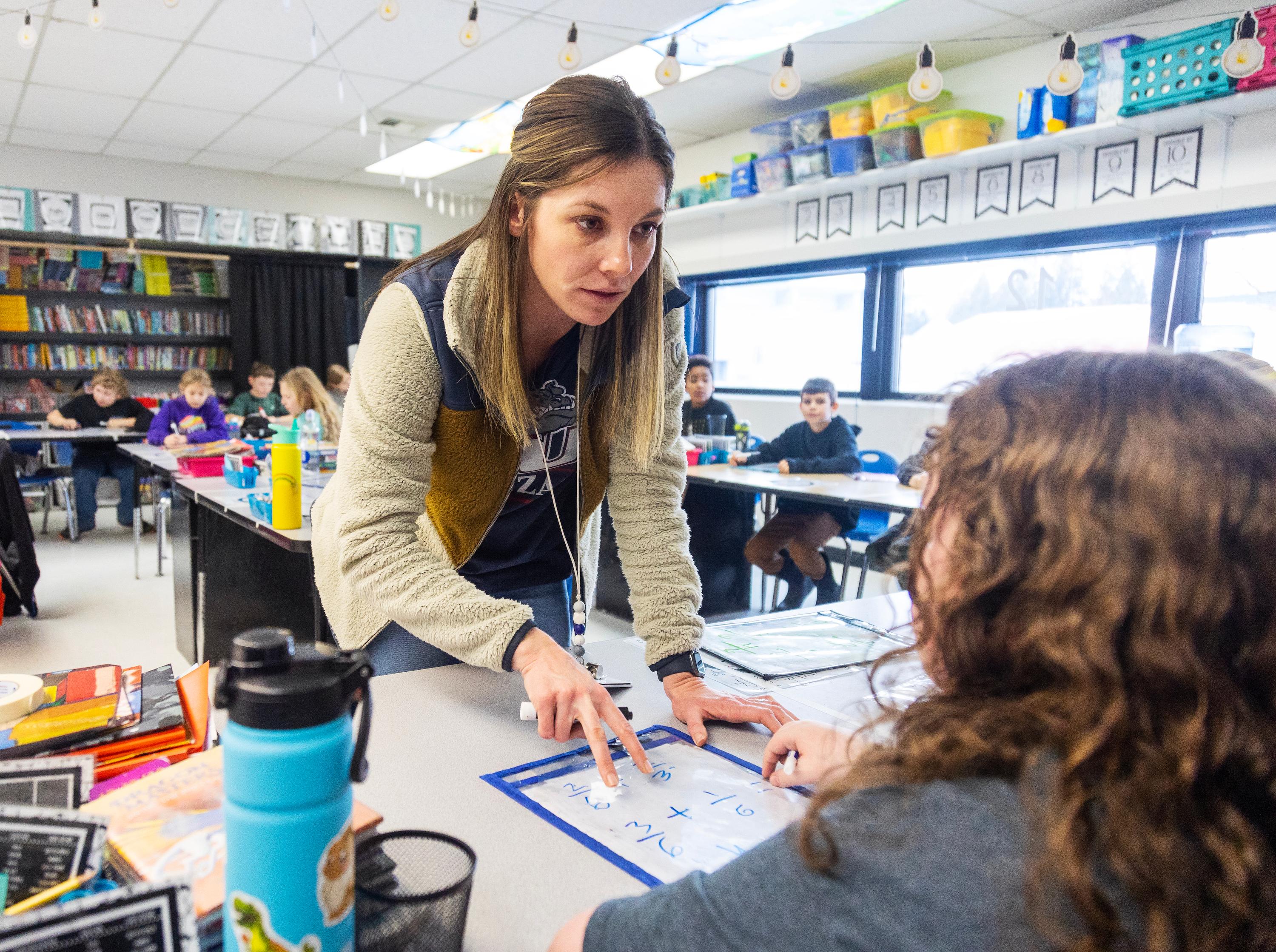
Every September, at the beginning of the school year, Drea Leach gets to her fifth grade Valley View classroom by 6 a.m. Hoping to beat the heat, the teacher opens the windows and lets in the outside air. But with Idaho increasingly facing record-high temperatures, it’s rarely enough to keep the room bearable for the day ahead.
By 10 a.m., the classroom can reach 85 degrees, she said. Students start to sweat, fan themselves and shut down. “To try to get kids to sit in here and learn and focus when it’s 85 degrees is almost impossible,” said Leach, who used her own money to provide a water cooler for students.
Boundary County teachers and administrators say there is little they can do with scant resources. Unlike schools in wealthier, urban communities like Boise, Valley View has no air conditioning, and bringing in AC units for the classrooms — like schools in the city of Nampa did last fall when its old units failed — isn’t an option. It would overload the electrical system, which is at capacity.

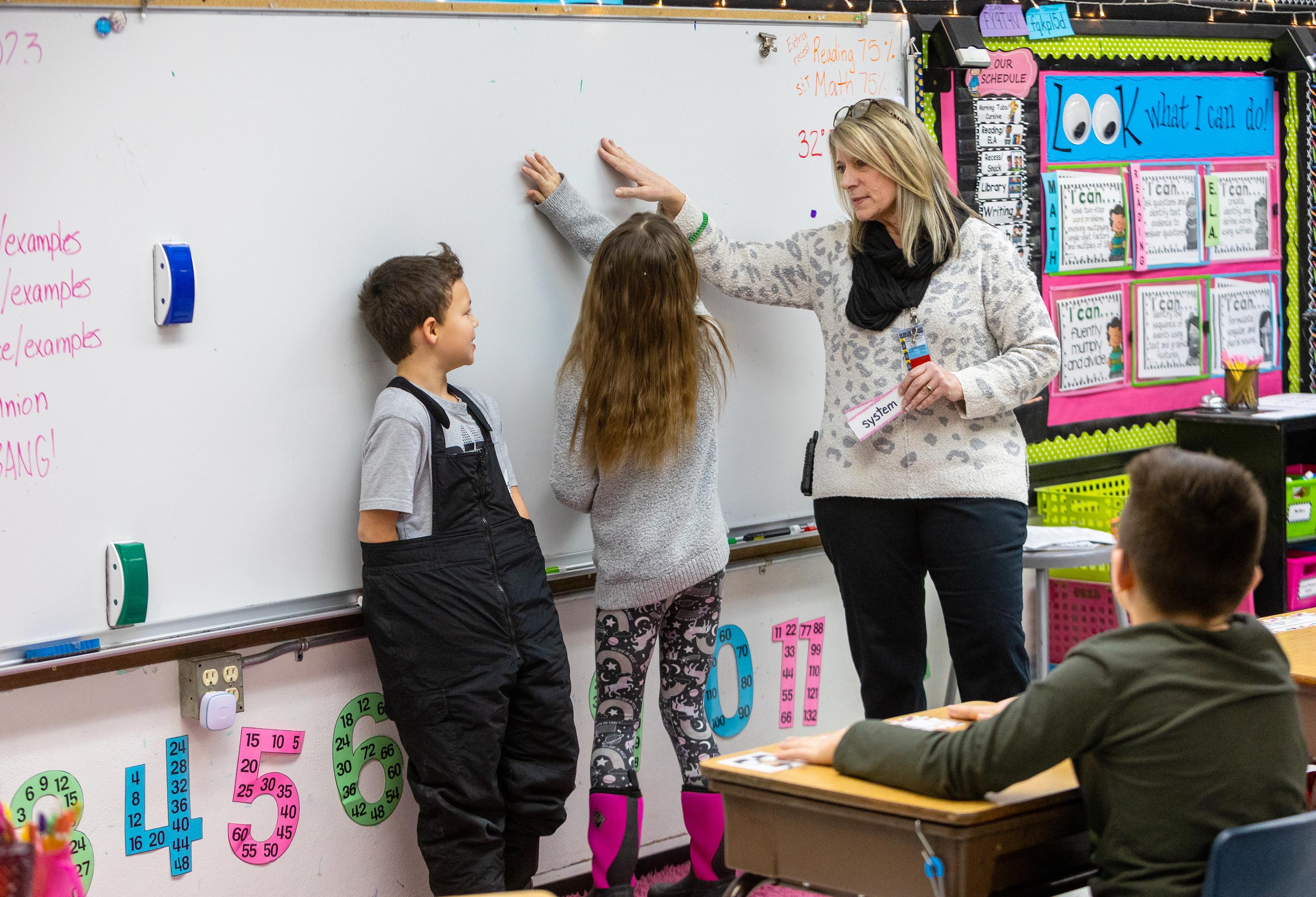
Winters present similar challenges. Aging cinder block walls provide little buffer against the cold, and the heating is inefficient and expensive to run. Leach has tripped the breaker by plugging in a space heater, so students are often forced to bundle up for instruction. Indeed, on a 36-degree January day, the Statesman and ProPublica observed students wearing their jackets and snow pants during class. The classroom can get so cold, Leach said, that she simply places her lunch on the floor near the outside wall to keep it cool. “It actually refrigerates itself,” she said.
Teachers often turn to Steve Bortz, Valley View’s head of maintenance. For the past seven years, he’s spent his days fielding calls from staff members about leaking ceilings, clogged drains and cracked walls. When the area gets big snowstorms, he spends hours blowing snow off the roof to prevent collapse. On a recent tour, he removed a hallway ceiling tile to reveal how he deals with leaks: buckets attached with tape to catch water. When he sees new cracks in the walls, he fills them, hoping to block drafts. “All I’m able to do is just try to take care of the situation as best as we can,” he said in an interview. “Most of the stuff I end up doing now is cosmetic.”
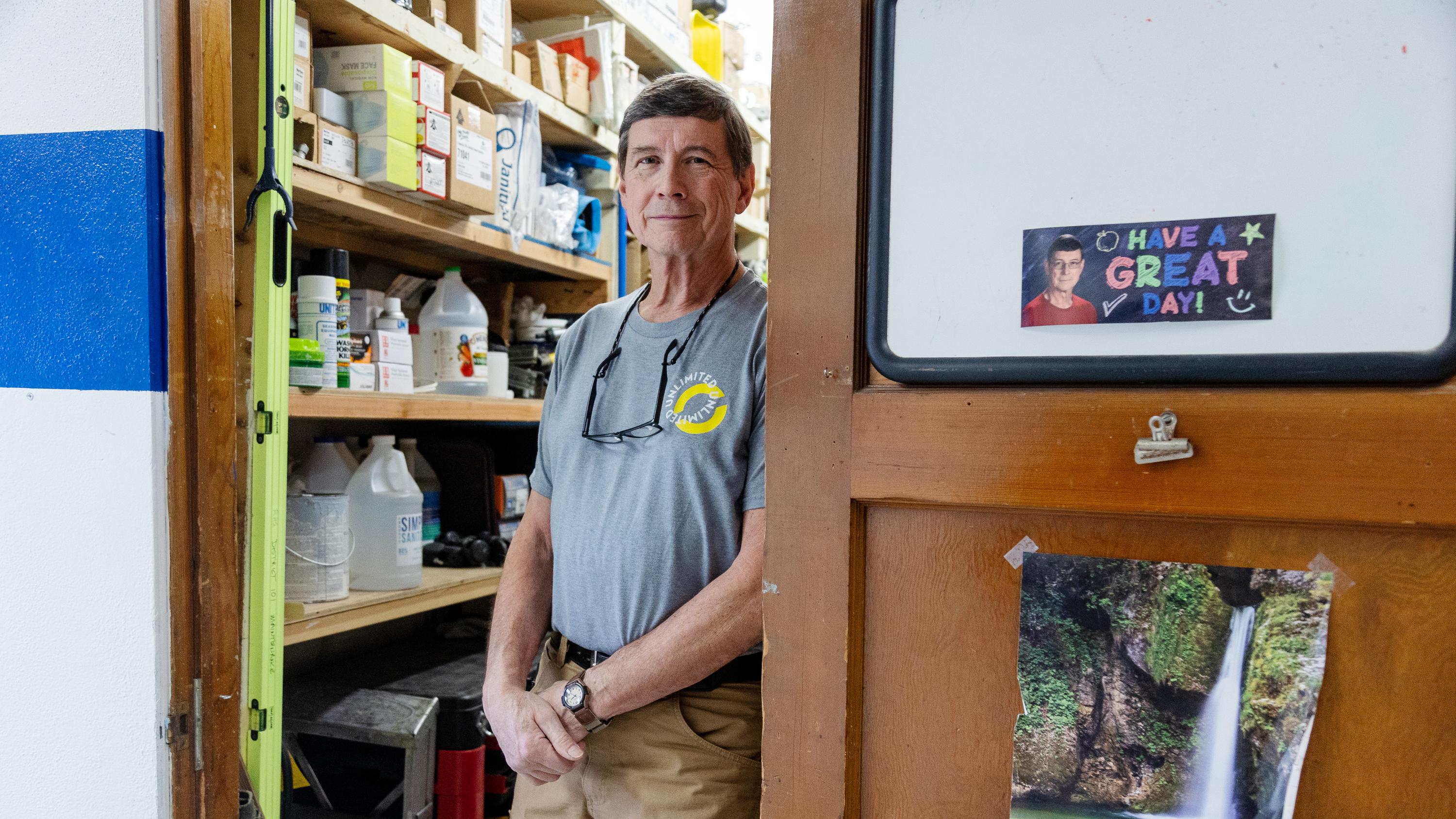
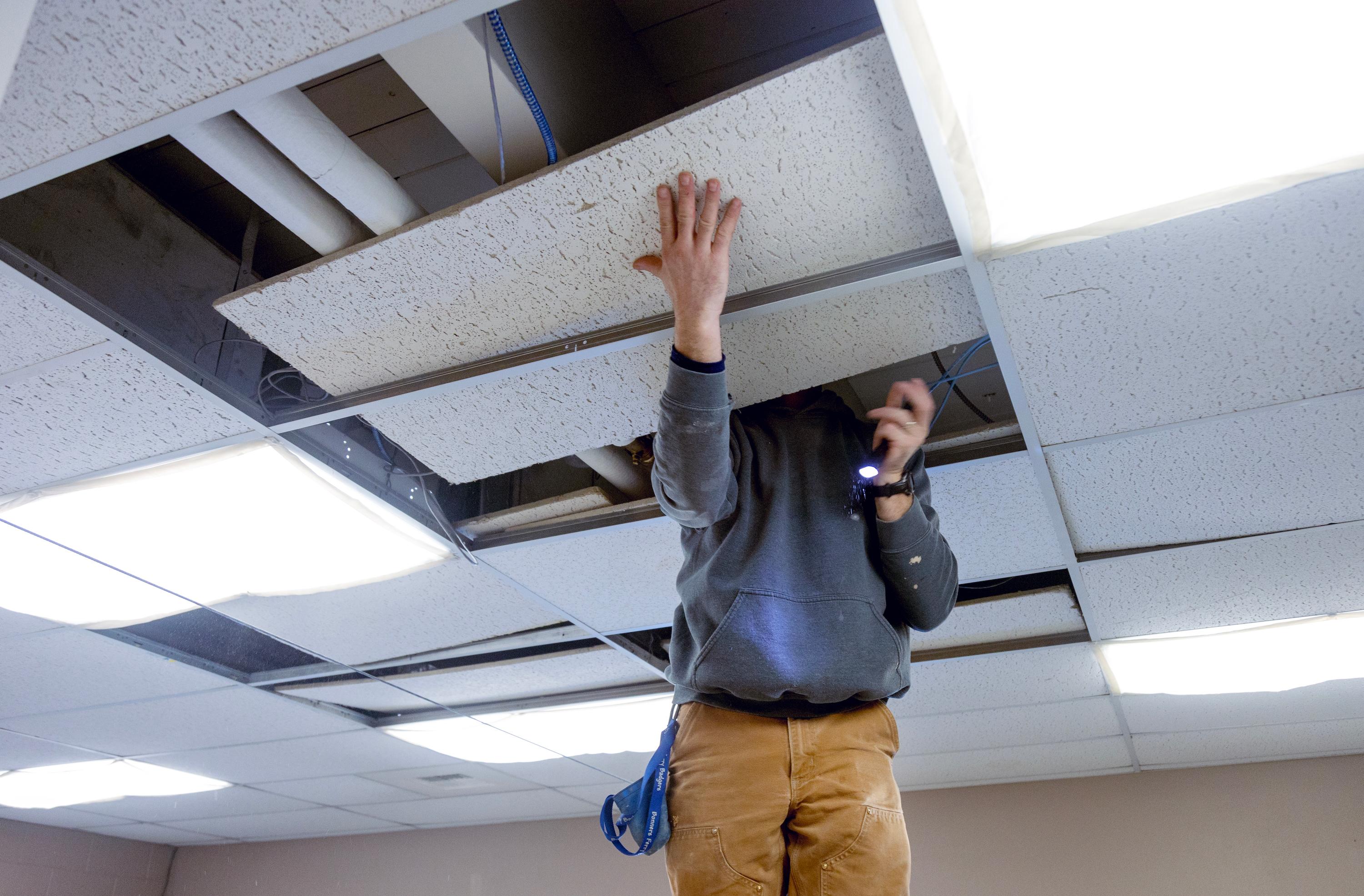
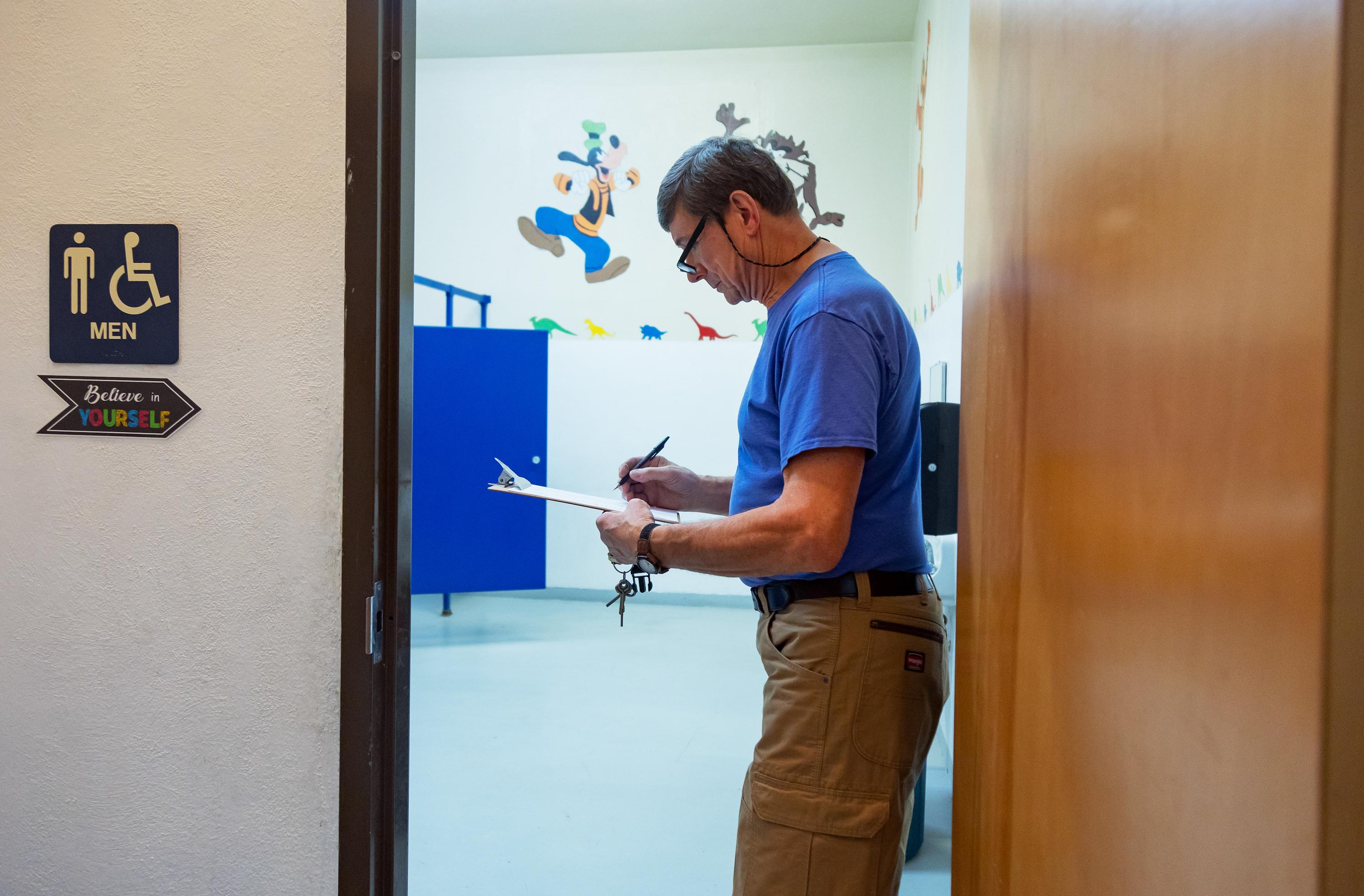
These kinds of conditions can impact learning. In 2017, researchers from the Harvard T.H. Chan School of Public Health, after reviewing more than 200 scientific studies, reported that temperatures can affect test scores and that poor ventilation is linked to fatigue and shorter attention spans. In interviews with the news organizations, seven teachers and staff members at Valley View complained about losing teaching time each month due to the school’s age and layout.
Notably, in addition to the climate challenges, students must travel between six buildings throughout the day — an unusual design implemented decades ago to deal with overcrowding. The distance between buildings is particularly hard on kindergarten students, who cross a street at least four times a day to get to lunch, to gym class and to the library.
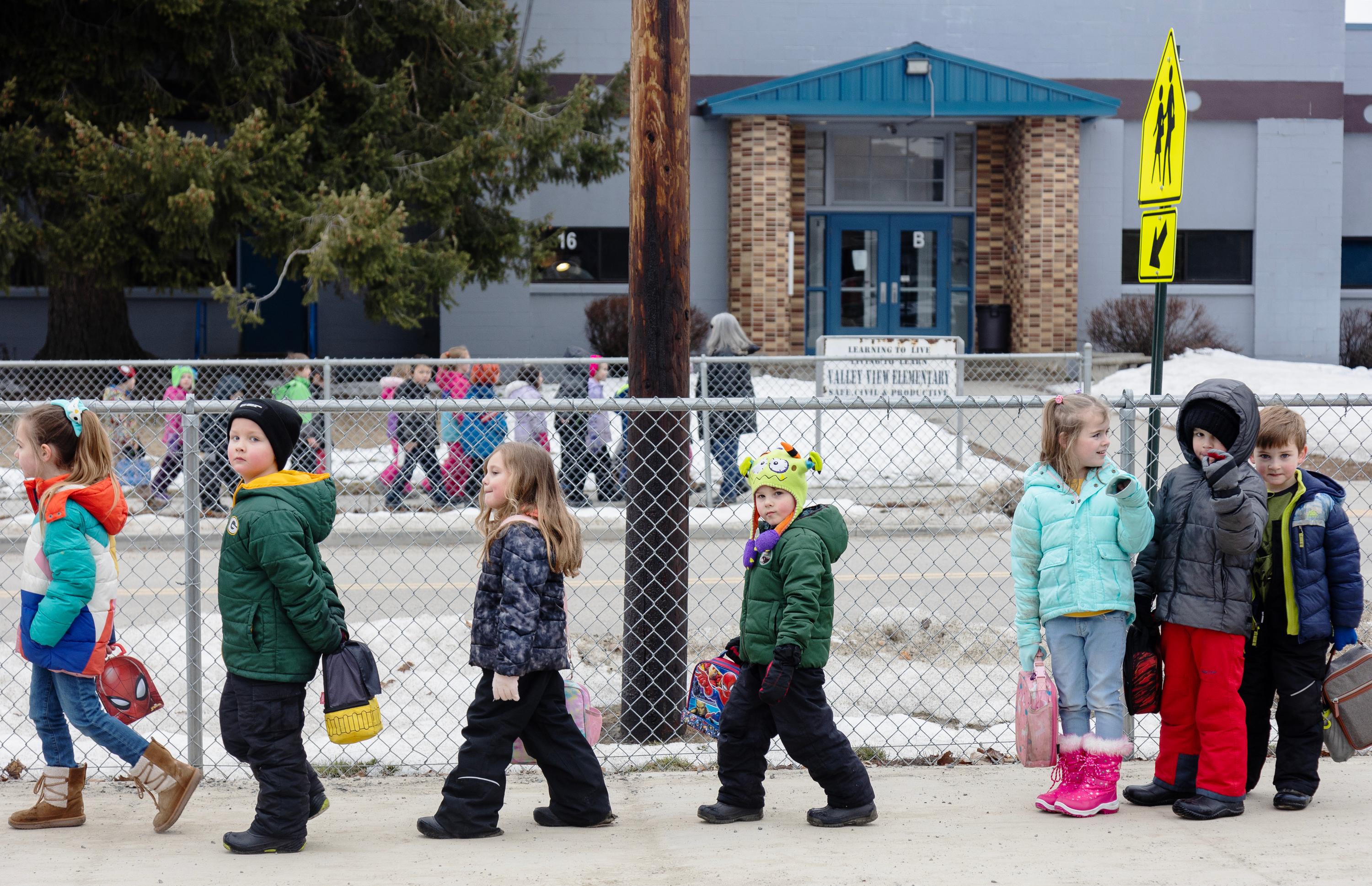
Traveling back and forth during winters when the ground is covered with snow and ice can be dangerous. Administrators say a boy who uses a walker has tripped on the broken sidewalk and was injured.
Administrators say it’s only a matter of time before the school will experience another crisis. Valley View’s plumbing system, for instance, is made up of clay and galvanized pipes, which are collapsing after more than seven decades of use. A “catastrophic failure” could render the bathrooms inoperable, Bayer said. If that happens, the main school building would have to shut down. To many teachers, the solution is clear: a new building.
“All we would have to worry about are the students. That would be our sole job,” said Teresa Smith, a second grade teacher. “We wouldn’t have to worry about the cracks or the ceilings or the bathrooms or them going in and out without supervision. We wouldn’t have to worry about any of that, just their education.”
A Call for State Intervention
On a cold night in January, Bayer faced the Boundary County school board. On the agenda was Valley View Elementary.
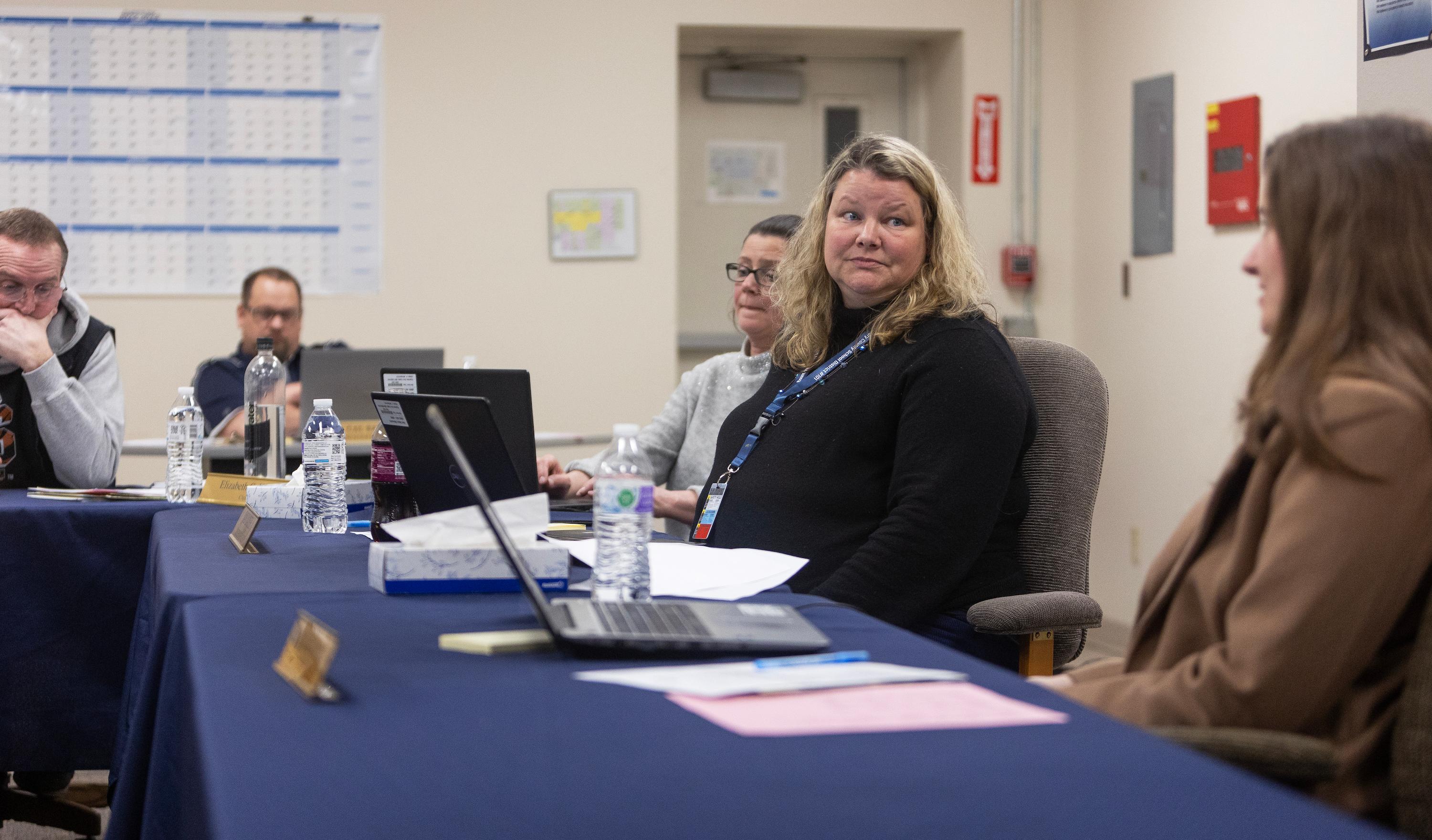
The district had done what it could by pitching bonds to voters, Bayer said. But twice, too many taxpayers said no. “I don’t know what else to do to convince the public that we need a new school,” Bayer told the board.
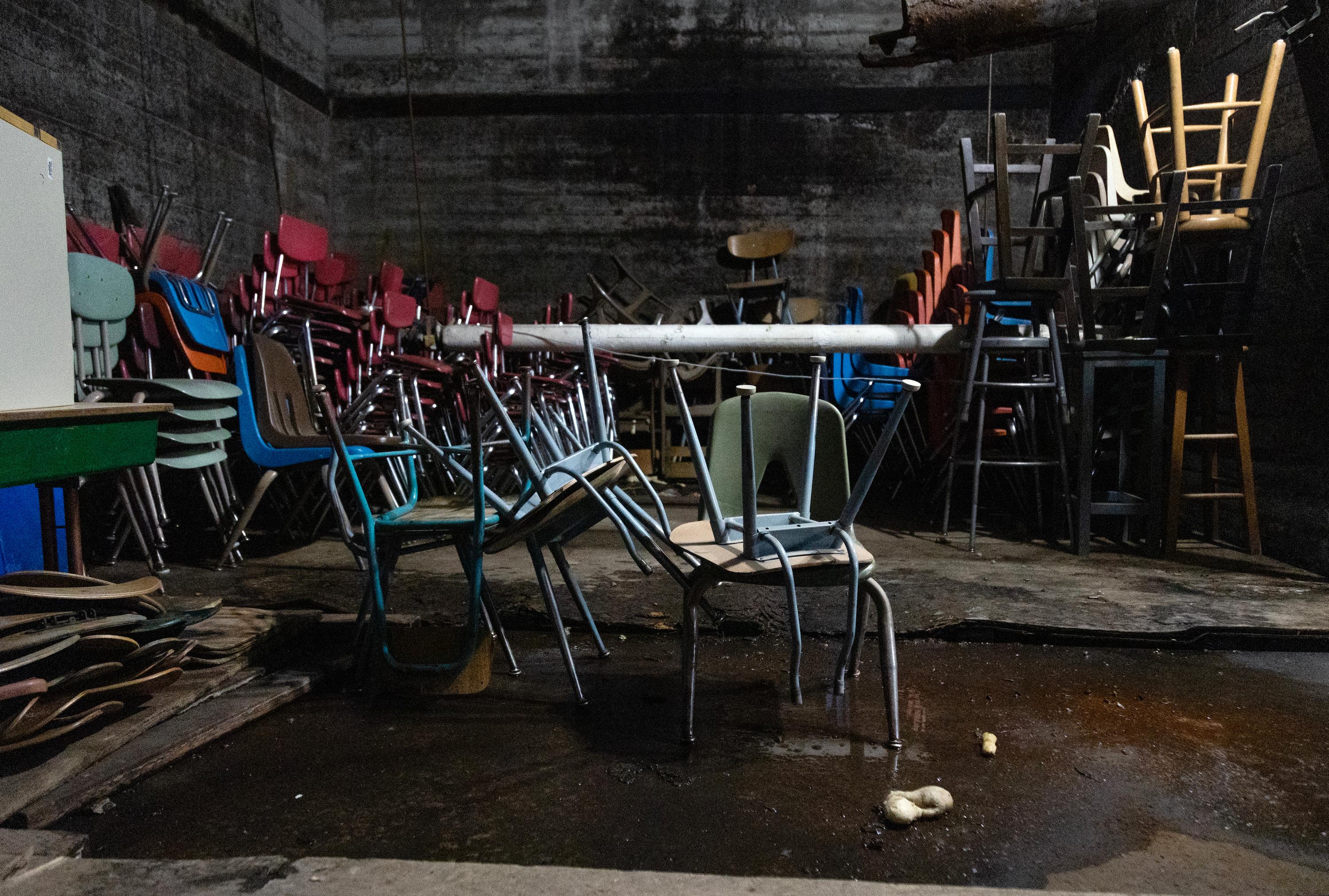

She then summarized the findings of the district’s facilities committee, which considered four potential courses of action, all of them grim: Do nothing while the conditions at Valley View deteriorate more; start making repairs, knowing they would be throwing money at a crumbling building; put another bond on the ballot; or ask voters to approve funds through a different kind of measure, known as a plant facilities levy. But even that levy would present challenges — while it could pass with less overall support than a bond, it could also result in much higher taxes for property owners right away and fewer funds for the school up front, meaning the district would need to attempt to build a new school in phases.
The group chose none of them. Instead, it recommended that the school board bring in the state.
As Bayer relayed this information to the room that night, board members shook their heads and covered their faces with their hands. Since 2006, Idaho has stepped in only twice to help school districts repair their schools. That help came at a price: a state loan, which was paid back by local residents through tax increases they didn’t agree to. Even then, in one case, the state covered only certain repairs and wouldn’t fund a new school, leaving the district with many of its problems still unresolved, The Associated Press reported.
That night, seeing no other choice, the Boundary County school board approved a plan to ask the state to intervene.
A state inspector will now determine the severity of Valley View’s issues, Teresa Rae, the board’s vice chair, told the Statesman and ProPublica. If the school is deemed unsafe, the district could ultimately apply for a state loan. Local leaders, however, are asking for more guidance from the state.
“Just tell us what to do. You created this mess,” Rae said at the board meeting. “You make it so difficult that you can’t pass a bond, yet you don’t fund facilities. … You tell us what to do.”
Had they just needed a simple majority to pass a bond, she said, “we’d already be building.”
Help Us Report on Idaho’s Deteriorating Public Schools
The Idaho Statesman and ProPublica need your help to get a full picture of school building conditions across the state. We want to understand the effects on students and teachers.























